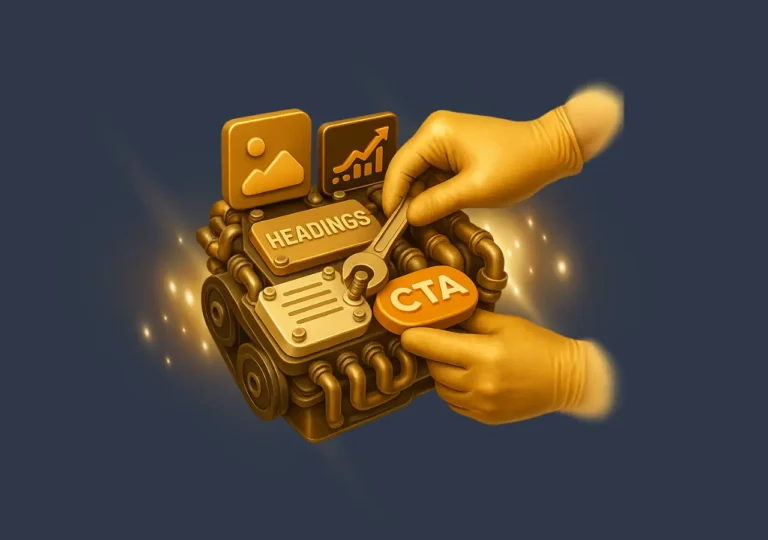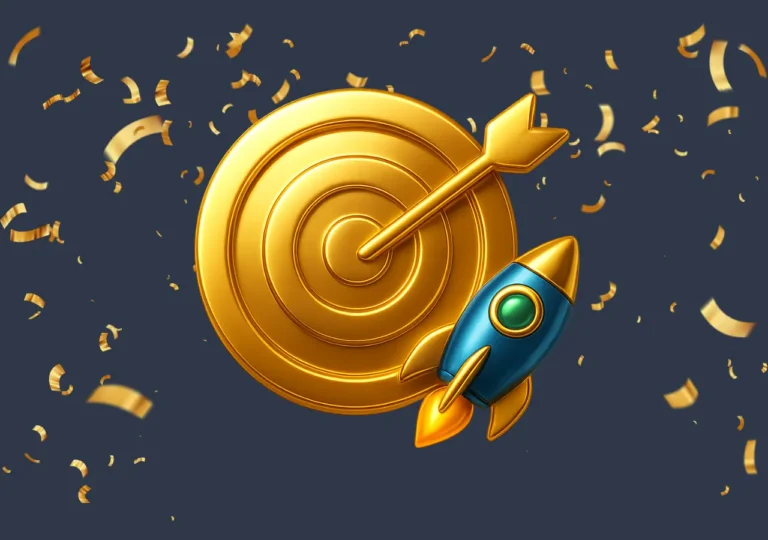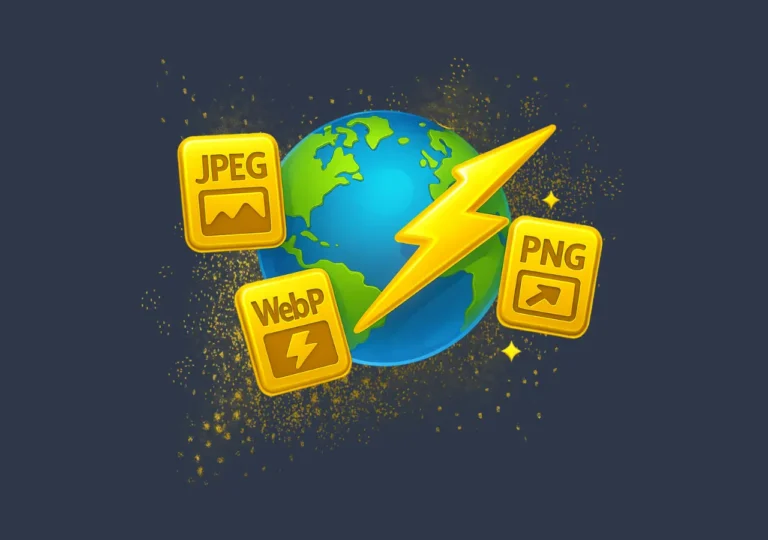
Why headlines are your blog’s first impression (and often the last)
Headlines are tiny doorways, and yep — people decide in a blink whether to walk through. You know that feeling: scrolling, scrolling, and then—bam—one title stops you cold. That’s not luck. That’s attention engineering. Sounds dramatic? Maybe, but it’s also practical. A headline does three things in about 400 milliseconds: it signals relevance, promises value, and triggers an emotion (curiosity, fear, joy, whatever). If any of those parts flops, CTR tanks. Simple as that.
Quick note: humans are lazy readers. We scan, skim, and make snap judgments. So your headline needs to do heavy lifting. It’s not about tricking people — please don’t — it’s about being honest and irresistible. Good headlines reduce friction. Bad ones create confusion and bounce rates.
Also — context matters. A great headline for Twitter might fail on your blog, and vice versa. Different platform, different hunger. But the core psychology? Mostly the same. Readers want clarity, usefulness, and a little emotional nudge. Give them that, and they click. Miss one piece, and you’re shouting into the void. 😬
How the brain reacts to headlines: attention, reward, and the curiosity gap
Our brains are wired to chase rewards and avoid waste. Makes sense, right? Headlines that hint at a reward (a solution, a tip, a secret) light up the brain’s anticipation circuits — dopamine gets involved, and suddenly clicking feels worthwhile. The trick: create a balanced curiosity gap — enough info to promise reward, but not so much that curiosity is satisfied before the click. Tease, don’t hand it all away.
There’s also the familiarity bias. If a headline fits with what someone already thinks or cares about, it feels safer to click. That’s why referencing trends, recognizable names, or common problems often works. But beware: too familiar becomes invisible. You need a small twist to break the pattern.
Finally, predictability equals boredom. Novelty sparks attention. So sprinkle in a fresh angle, a surprising stat, or a contrarian take. Just one small surprise can make a headline pop. Hmm… where was I? Oh yeah — make them curious, give a hint of value, and keep it honest. That’s the mental cocktail for clicks. 🍸
Emotional triggers that move CTR: fear, joy, envy, and curiosity
Emotions shortcut decision-making. People click when a headline triggers a feeling strong enough to override indecision. Which emotions work best? Here are the big players:
- Fear/avoidance: “Don’t make this mistake…” (powerful, but use carefully)
- Hope/aspiration: “How to finally…” (promises improvement)
- Curiosity: “The one thing you didn’t know about…” (teases)
- Envy/social proof: “Why top founders are doing X” (implies success)
Not all emotions are created equal though. Urgency and scarcity amplify action, but overdo them and people sniff a sales trap. Joy and triumph are underused — celebrating wins (even small ones) builds trust and feels good. And yes, you can mix emotions: a headline that hints at loss but ends with hope often performs well. It’s like a mini story.
Quick tip: swap the emotional tone depending on your audience. Technical readers might prefer clarity and utility; lifestyle readers respond to heart and aspiration. Adjust the emotional dial, and you’ll see CTR changes. Definitely test it. 🔬
Social proof, authority, and credibility — why some titles feel safer
Humans are herd animals. When others endorse something, we’re more likely to join in. That’s why headlines that include numbers, names, or case studies often win. “How 3 startups grew to $1M” — sounds legit. Add a recognizable brand, and trust shoots up. Simple social proof cues reduce perceived risk.
Authority words — “study,” “research,” “experts” — also boost credibility. But here’s the rub: if you claim authority without backing it up, readers bounce fast. So pair authority with a promise you can deliver. If you mention a study, summarize the key takeaway in the intro. If you cite an expert, quote them or link to the source. Honesty matters.
And testimonials? Great, but they work best in the body. For headlines, use social proof sparingly: numbers, timeframes, or known names. People trust proven results. Give them proof early and the click becomes low-risk. 👍
Power words, numbers, and sensory details: language that converts
Words matter. Some words pull harder than others. “Proven,” “easy,” “rare,” “free” — these are power words because they suggest value or reduction of effort. Combine them with numbers and you get precision plus promise: “7 quick ways to…” beats “Ways to…” almost every time. Why? Numbers imply structure, digestibility, and a clear payoff.
Sensory details (visual, tactile language) can also increase vividness and make a headline stick. “A messy inbox fixed in 10 minutes” paints a picture. Even tiny verbs shift responses: “fix,” “crush,” “escape” — pick verbs that match your audience tone.
But keep it real. “10 jaw-dropping hacks” may sound exciting, but if the content is fluff, readers will feel duped. Use power words to amplify genuine value, not to mask thin content. Readers remember vibes and trust — and they’ll punish deception with low CTR next time. Oops. 🤦♀️
Structure, length, and readability: what the eye actually processes
Length matters, yep, but context matters more.
For search results, shorter titles (50–60 characters) often perform better because they don’t get cut off.
Social posts, you can stretch a little.
For email subject lines? Keep them punchy — 6–10 words typically outperform long ones. Remember: people scan on mobile too. Most readers see headlines in a tiny space, so the first words must carry weight.
Structure-wise, numbers + benefit + specificity = a solid formula. Example: “5 Simple Ways to Cut Your Rent in Half.” Boom. Another is problem + promise: “Still Struggling with Sleep? Try This 2-Step Fix.” The clearer the promise, the easier the click decision.
Also, readability beats cleverness. Clever headlines can work, but they require extra cognitive effort — readers may skip them if they’re multitasking. So unless you’re writing for a niche audience who loves wordplay, favor clarity. Keep sentences short, verbs strong, and avoid vague buzzwords. Your CTR will thank you. 🙌
Testing, measuring, and iterating: how to grow CTR steadily
Testing is where the rubber meets the road. Theories are nice, but numbers tell the truth. Run A/B tests on headlines whenever you can. Small lifts compound: a 10% CTR improvement that scales across hundreds of posts equals real traffic gains. Don’t sleep on iterative tweaks. Slight wording changes — switching “how” to “why,” or adding a number — can move the needle.
Practical testing tips
- Test one variable at a time (avoid word salad experiments).
- Run tests long enough to reach statistical significance — or at least a reliable sample size.
- Track downstream metrics too (time on page, conversions). CTR alone isn’t the full story.
Also, keep a swipe file. Save winners and the context (platform, audience). Over time you’ll spot patterns: maybe listicles with “7” outperform “10” for your niche, or curiosity hooks beat how-tos on LinkedIn. Learn from your data and refine your headline playbook. It’s not glamorous, but it’s effective. Keep iterating, measure, and don’t get married to any single formula. The landscape shifts, and your headlines should too. 🔁
Practical headline formulas and a quick checklist for bloggers
Ready to write? Cool. Here are headline formulas that actually work, with quick examples. Use them as starting points, then humanize them for your brand voice. Don’t be robotic — mix, match, and tweak.
- Number + Promise: “7 Ways to Boost Blog Traffic in 30 Days”
- Problem + Solution: “Tired of Low Open Rates? Try These Subject Line Tweaks”
- Curiosity Gap: “What Nobody Tells You About Freelance Pricing”
- Authority + Result: “Research Shows This Boosts Engagement by 45%”
- How-To (with timeframe): “How to Write a Headline That Converts in 5 Minutes”
Quick checklist before you publish:
- Does the headline promise clear value? ✔️
- Is it truthful and deliverable? No bait-and-switch. ✔️
- Have you used a power word or number? Maybe. ✔️
- Is it optimized for the platform (SEO length, social length)? ✔️
- Did you A/B test variations? If possible, do it. ✔️
Final micro-tip: write 10 headlines for every post. Yes, 10. You’ll often find your best headline is the one you almost discarded. Weird, but true. 😅
Common headline mistakes and how to avoid them
Some mistakes are classic. We all fall into them sometimes, don’t worry. Here are the big traps and how to sidestep each one.
- Vague promises: “Tips for Success” — what exactly? Be specific.
- Clickbait: tricks might get a click, but they’ll ruin trust. Don’t do it.
- Overcomplication: long, twisting headlines confuse scanners.
- Ignoring platform constraints: your perfectly crafted headline gets cut off on mobile? Ouch.
- Failing to test: assuming a headline is good without data is a rookie move.
Solution? Use the checklist above, respect your audience, and test. Also, watch analytics not just for CTR but for bounce rate and time-on-page. If CTR goes up but readers leave immediately, the headline may be misleading. Balance temptation with truth. Be bold, but be fair. Your reputation matters. And hey, if you mess up, learn and move on. Nobody gets it right every time. 😉
Wrap-up: make headlines work for you (not the other way around)
Headlines are leverage. Invest time there and you’ll reap traffic and trust. It’s not just about clever phrasing — it’s about psychology, ethics, and iteration. Use emotional triggers, clarity, numbers, and authority where they fit. Test often, keep a swipe file, and adapt to platforms and audiences. Little improvements compound. Over weeks and months, a steady CTR lift changes everything.
Final thought: be human. Readers can smell fakery. Write headlines that respect their time and curiosity. Give value, tease just enough, and deliver. Do that, and clicks follow. Sounds simple, right? It kinda is — but it takes practice. Keep at it, have fun with it, and watch your blog grow. 🚀
❓ FAQ: Headlines & Blogging
Because people decide in less than a second if they’ll click. A headline must show relevance, promise value, and spark emotion. If it fails, readers scroll past and CTR drops.
Our brains chase rewards. Headlines that hint at a solution, secret, or benefit activate anticipation. The trick is to create curiosity without giving everything away — that’s what makes people click.
Fear, curiosity, hope, joy, and envy. Emotional triggers help readers act quickly. For example, “Don’t make this mistake” uses fear, while “How to finally succeed” uses hope. Mixing them works even better.
When a headline shows proof — like numbers, results, or names — people trust it more. “How 3 startups grew to $1M” feels safer than a vague promise. Authority and credibility reduce hesitation.
Yes. Numbers give structure, and power words like “easy,” “proven,” or “free” add appeal. Together they create clarity and urgency. For example, “7 easy tips” is more clickable than “Some tips.”
It depends on the platform. For Google, keep it under 60 characters. For email, 6–10 words perform best. On social media, you can go longer, but put the strongest words first.
Choose clear over clever. People scan headlines quickly, especially on mobile. A simple, direct headline usually outperforms a witty one, unless your audience expects wordplay.
Try these:
Number + Promise (“5 easy ways to save money”)
Problem + Solution (“Struggling with sleep? Try this fix”)
Curiosity Gap (“What nobody tells you about X”)
Authority + Result (“Study shows this boosts focus by 40%”)
How-To + Timeframe (“How to do X in 10 minutes”).
This article was prepared using the AUTO-POST-SEO plugin






